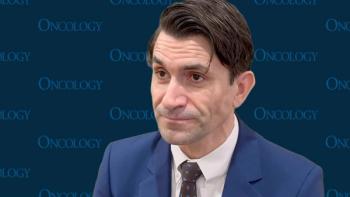
Intermittent Imatinib Feasible in Elderly CML Patients
Treatment with intermittent imatinib is feasible among elderly CML patients who are stable responders to the drug, according to a new study.
Treatment with intermittent imatinib is feasible among elderly patients with chronic myeloid leukemia (CML) who are stable responders to the drug, according to a new study. Those patients who do lose their response can be safely brought back to stable response.
In previous research, about 50% of patients who achieve a deep molecular response (20% to 40% of all CML patients taking imatinib) can achieve treatment-free remission (TFR), where imatinib is discontinued. That leaves at least “50% of all patients [who] will not be able to discontinue, and for them, the current policy is to continue the treatment with the same TKI, at the same dose and schedule, indefinitely and lifelong,” wrote study authors led by Domenico Russo, MD, of the University of Brescia in Italy.
In the new study, researchers tested a 1-month-on, 1-month-off imatinib schedule for 76 CML patients aged at least 65 years; all patients were in stable and optimal response with at least 2 years of imatinib treatment. The results were
After a median follow-up of 5.75 years, 16 patients (21%) lost both complete cytogenetic response (CCyR) and major molecular response (MMR); another 16 patients (21%) lost MMR only. With one exception who was lost to follow-up, all of those patients were given the same dose of imatinib on a standard schedule after losing response, and all achieved CCyR and MMR once more.
The probability of remaining on the intermittent schedule at 6 years was 48%. No progressions occurred in any patient. Nine patients died while in remission, due to another cancer (five patients), chronic pulmonary obstructive disease (two patients), or cardiovascular events (two patients). The median age at death was 75 years.
With regards to toxicity, only 20 patients reported any side effects, and all were minor. With the intermittent schedule, 50% of patients reported that their side effects disappeared; muscle pain and cramps in particular appeared reduced.
“It is time to open a debate not on compliance but on which dose should be used for chronic treatment, once a stable, optimal response has been achieved,” the authors concluded. They added that focusing only on patients who achieve TFR will exclude as many as half of CML patients from the possibility of dose reductions or changes to schedule. “For the patients who do not achieve a TFR, it is necessary to reconsider some current concepts of treatment and to begin to look for a ‘minimum effective therapy.’”
Newsletter
Stay up to date on recent advances in the multidisciplinary approach to cancer.


















































































